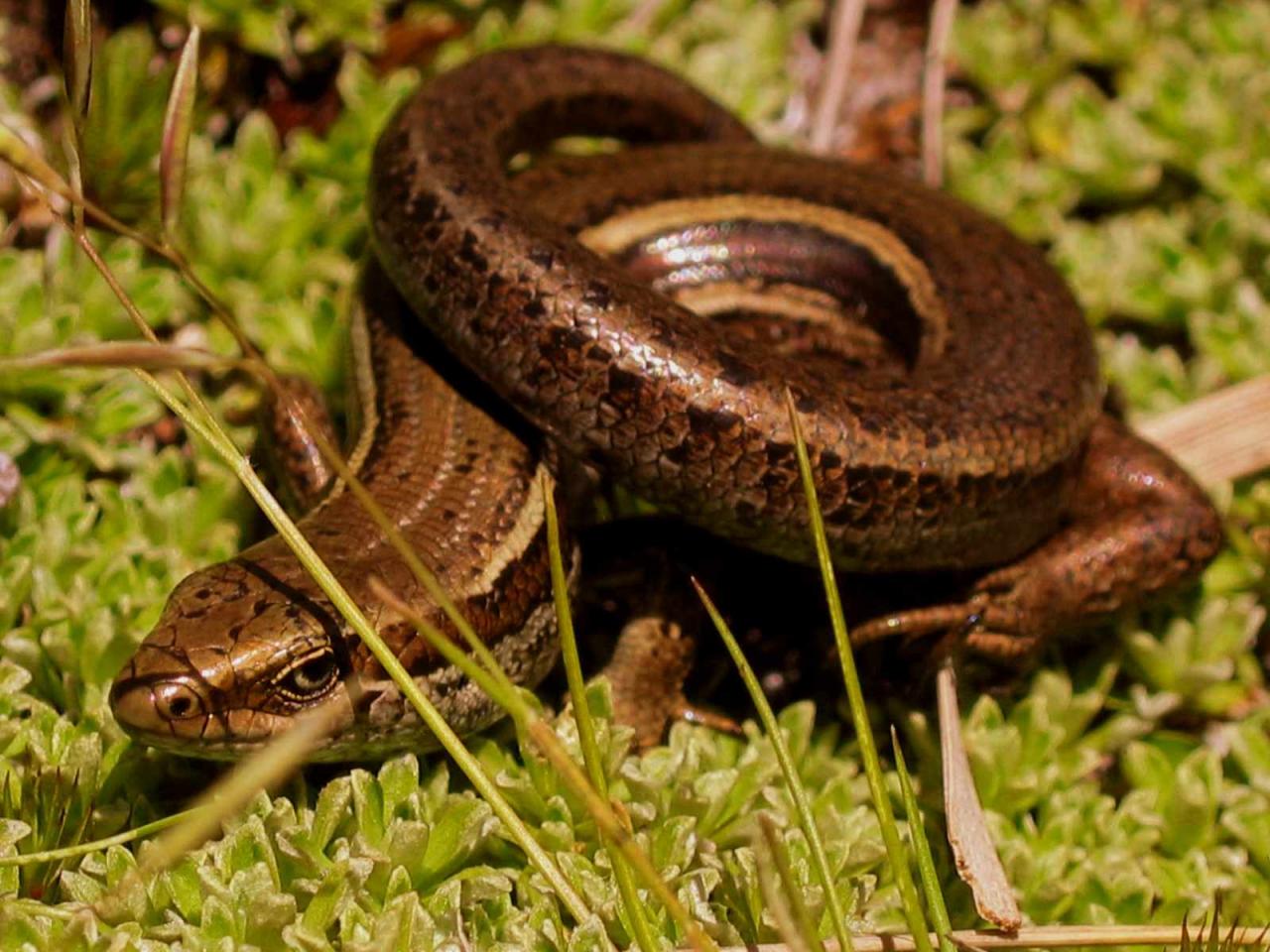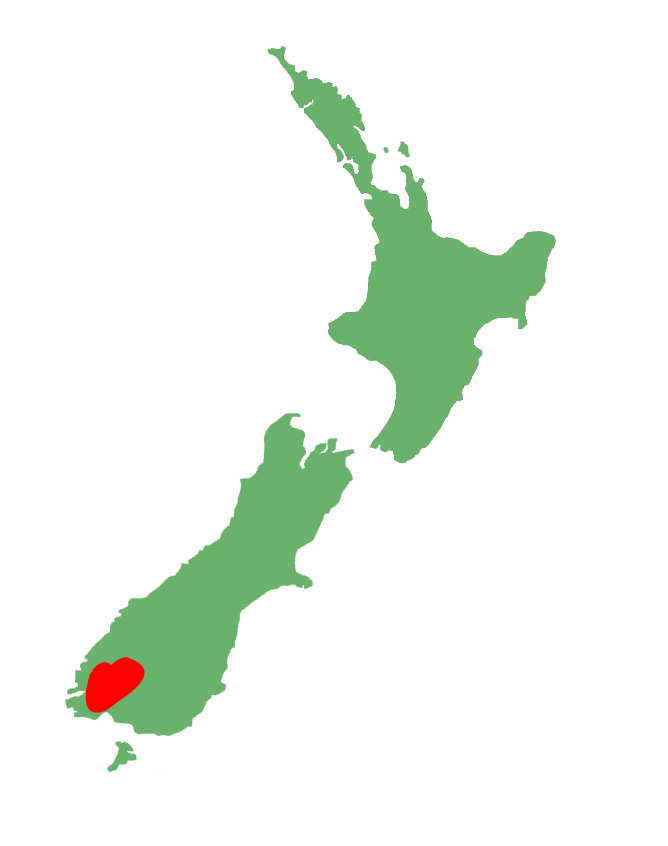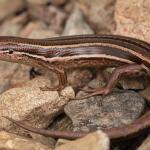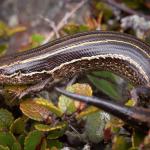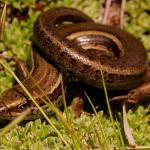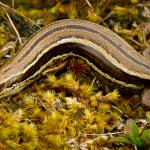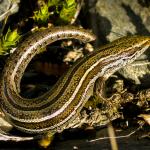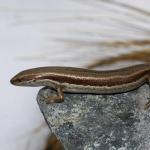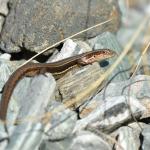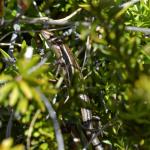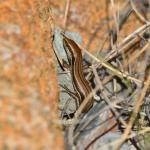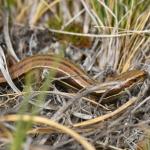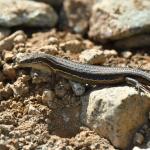- Home
- Herpetofauna Index
- Native
- Oligosoma Repens
Oligosoma repens
Eyres skink
Oligosoma repens
(Chapple et al., 2011)
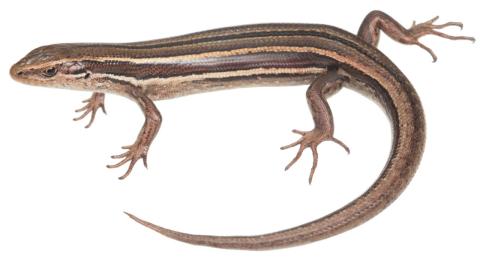
Length: SVL up to 62 mm, with the tail being longer than the body length
Weight: At least 3 grams
Description
A brightly colored species related to the burgan skink (Oligosoma burganae) and Nevis skink (Oligosoma toka) (Chapple et al. 2011) with a snout-vent-length (SVL) up to 62 mm.
Eyre's skinks typically have a yellow-brown dorsal surface that is usually more of a gold color than its close relatives. This species possesses a dark brown mid-dorsal stripe that extends to the base of the tail. This species also typically bears thin pale dorsolateral stripes, which have black margins. The lateral surfaces of this species bear a darker lateral band that is bordered above by the dorsolateral stripe, and below by a pale cream-yellow stripe too. The ventral surface of this species is a brilliant lemon yellow colour (typically mustard yellow in Nevis skink (Oligosoma toka), with a white-grey chin and throat, which may possess black speckles. Eye colour brown. 3 supraocular scales. Subdigital lamellae 19-23. Soles of feet are black or dark brown (van Winkel et al. 2018; pers. comm Carey Knox).
Life expectancy
Unknown.
Distribution
This species was initially thought to be restricted to the Eyre Mountains, however, this species has now also been found in the Thompson Mountains, Hector Mountains, Tākitimu Mountains, Eldrig Peak, Humbolt Mountains, Mount Titaroa, Mount Luxmore, Borland Saddle (Fiordland), and the Murchison Mountains.
Ecology and habitat
Eyre's skinks are diurnal, terrestrial, heliothermic, and are often saxicolous. They occur in close sympatry with species like the McCann's skink (Oligosoma maccanni), however, can be recognized by their 3 (vs. 4) supraocular scales, and more golden-yellow (vs. grey-brown) color. This species is often found in rocky shrubland, talus, screes, tussockland and herbfield. Was thought to be a higher altitude specialist, but has been found in the lowlands near Lake Te Anau (van Winkel et al. 2018; pers.comm. Samuel Purdie 2021; pers. comm. Tony Jewell 2021).
Social structure
Uknown.
Breeding biology
Unkown.
Diet
Feeds on small insects and possibly the fruits of native shrubs.
Disease
Unknown.
Conservation strategy
This species is not currently being actively managed.
Interesting notes
Like Nevis skink (Oligosoma toka), this species has been known to curl its tail above its body as a possible defense mechanism.
References
van Winkel, D., Baling, M., Hitchmough, R. 2018. Reptiles and amphibians of New Zealand – a field guide. Auckland university press, Auckland New Zealand.

